Weaponizing Chaos: Exploring Militant Accelerationism from the Far-Left to the Far-Right
By Andrea Molle, Associate Professor, Chapman University
Abstract
Militant accelerationism is defined by the Accelerationism Research Consortium as a set of strategies aimed at exacerbating social divisions to hasten the collapse of society, often through violent means. This phenomenon is not confined to a single poli-tical ideology, being present in both the far-right and far-left, though manifesting in different forms. Far-right accelerationism primarily opposes equality, viewing it as a threat to the natural social order, and seeks to precipitate the collapse of liberal de-mocracies through polarization and political violence. From a geopolitical perspective, nations like Russia and China might support such movements to destabilize the West and undermine the legitimacy of the liberal democratic model, thereby reinfor-cing their authoritarian positions. On the other hand, far-left accelerationism originates from Marxism, aiming to accelerate the downfall of capitalism to trigger a proletarian revolution. These dynamics represent a growing threat to international security, as they exploit internal tensions and social divisions to promote global instability.
Keywords
Accelerationism, Far-left, Far-right, Manosphere, Radicalization, Societal collapse
Introduction

The Accelerationism Research Consortium, a research initiative specializing in the study of militant accelerationism, defines it as a collection of tactics and strategies aimed at intensifying latent social divisions, often through violent means, in order to expedite the collapse of society. Accelerationism does not necessarily align with a specific political ideology and can be observed on both the extreme left and extreme right of the political spectrum. However, there are distinctions between the two.
For instance, far-right militant accelerationism does not concern itself with critiquing modern capitalism or postcolonialism, but rather focuses on countering the contemporary pursuit of equality, which is perceived as a manifestation of societal decay and a threat to the established social order based on inequality, which is considered the “natural order.” In order to safeguard or reinstate this “natural order,” far-right militant accelerationism seeks to create circumstances that would lead to the downfall of the existing liberal and democratic system, such as through a “race war” or a civil war. Militant accelerationism functions as a platform for political action with the objective of hastening the downfall of liberal and capitalist societies. Its core strategy involves disseminating contradictory and problematic political ideologies through various means, such as promoting polarization or engaging in political violence. This form of terrorism aims to create social emergencies and crises, ultimately incapacitating and dismantling social institutions.
From an International Relations and Security Studies perspective it is noticeable that this goal aligns with the objectives of hostile nations. Russia and China, for example, may support militant accelerationism regardless of its political ideology alignment in the West for several strategic reasons. Firstly, fostering chaos and division within Western nations serves to undermine their stability and global influence, thereby potentially strengthening the position of Russia and China on the world stage. By exacerbating existing societal tensions and polarizations, these countries can create distrac-tions for Western governments, diverting their attention and resources away from global issues such as Ukraine or Taiwan. Secondly, supporting accelerationist groups aligns with Russia and China’s broader objectives of challenging the Western liberal democratic model. By promoting extremist ideologies that reject democratic norms and institutions, such as militant accelerationism, these countries seek to delegitimize Western values and weaken the appeal of democracy as a political system globally. This tactic can help bolster the perceived legitimacy of authoritarian regimes like those in Russia and China, presenting them as stable alternatives to Western democracies. Moreover, fostering internal strife in Western countries can serve as a form of retaliation or deterrence against perceived Western interference in the domestic affairs of Russia and China. By supporting militant accelerationism, these countries can retaliate against Western sanctions, criticisms of human rights abuses, or support for opposition movements within Russia and China. Additionally, by highlighting the internal divisions and societal unrest in Western nations, Russia and China can dissuade Western governments from intervening in their domestic affairs or pursuing aggressive foreign policies against them.
1. Far-left militant accelerationism
Accelerationism, as a concept, originated from Marxism and the belief that by intensifying the detrimental forces within capitalism, its eventual destruction and subsequent liberation through revolution can be achieved. Left-wing terrorism involves the use or threat of violence by subnational or non-state entities that oppose capitalism, imperialism, and colonialism. They may also advocate for environmental or animal rights, hold pro-communist or pro-socialist beliefs, or support decentralized social and political systems like anarchism. In terms of incidents, the number of fatal incidents attributed to far-left ideologies is fluctuating. The global peak of revolutionary accelerationist leftist violence occurred during the 1960s and 1970s. However, until 2012, there were still four times as many far-left terrorist incidents compared to far-right incidents. In recent years, particularly in 2019 and 2020, the number of far-right and far-left incidents has been roughly equal. As per more recent times, the situation has started to differ between Europe and the United States. In Europe, far-left attacks started again to be more prevalent. German organizations such as the Engel – Guntermann and the Hammerbande have a clear focus on targeting right-wing extremists or individuals perceived as such. However, there is a noticeable shift in their approach, as they are increasingly engaging in activities that extend beyond local conflicts with the right-wing extremist milieu. The collaboration between group members and non-Germans in carrying out attacks suggests a growing connection to external groups. This interconnectedness among left-wing extremist networks in Europe has the potential to influence their strategies and the specific targets they choose.
In the United States, according to the Anti-Defamation League, only 6% of the 443 registered extremist fatalities between 2012 and 2021 were linked to far-left ideologies. In comparison, 75% were linked to far-right beliefs, and 20% were linked to Islamist beliefs. It is important to note that all the casualties related to far-left ideologies in the US were associated with Black nationalism, which the ADL categorizes as left-wing extremism. Overall, the violent threat posed by left-wing extremists in the US remains relatively small whereas in Europe it is increasing. The trend has been confirmed by several authorities. For example, the Terrorism Situation and Trend Report (TE-SAT) report in 2022 that 80% of the successfully executed attacks were carried out by left-wing and anarchist terrorist groups.
Globally, movements affiliated with far-left ideologies include Antifa groups, as well as environmental or animal issue groups like the Earth Liberation Front and the Animal Liberation Front. There are also various far-left alternative media outlets, such as The Grayzone or Breakthrough News, and organizations like the Party for Socialism and Liberation or Workers World Party. These entities may occasionally express sympathy towards authoritarian regimes perceived as hostile to the West and embrace conspiracy theories. While these platforms may not overtly endorse violence, their content and campaigns actively advocate for authoritarian ideologies within mainstream audiences, thereby eroding the credibility of human rights and democracy advocates and promoting polarization. The Grayzone, a far-left media outlet, exemplifies this concerning trend. Established in 2015 by journalist Max Blumenthal shortly after a trip to Moscow, this media platform consistently adopts an ostensibly anti-imperialist stance, frequently defending Syrian President Bashar al-Assad, Vladimir Putin, and Venezuela’s Maduro for their purported resistance against US dominance. Furthermore, it denies the occurrence of the Uyghur genocide and chemical gas attacks in Syria. Blumenthal himself has participated in anti-lockdown and anti-vaccine rallies, and currently plays a highly active role in the Pro-Hamas/Pro-Palestinian movement, which poses a significant and alarming new challenge to national security.
1.1. The use of Internet by far-left militant accelerationism
The exploration of the online far-left culture is a topic that is often overlooked. This particular faction, which exists on the fringes of the broader left, positions itself as being against various ideologies and groups such as the alt-right, political correctness, social justice warriors, and centrists and liberal-democratic stances. Despite its ideological roots and the tendency of the left to look down on popular online culture, it employs similar tactics to the online alt-right, including the use of humor, memes, Twitter trolling, and open hostility. However, it remains firmly rooted in progressive leftist ideology. Referred to by various names such as the “alt-left,” the “vulgar left,” or the “Dirtbag Left,” this origin of this movement is attributed to Amber A’Lee Frost, a writer, podcaster, and activist based in Brooklyn. Her podcast Chapo Trap House, associated closely with this movement, employs comedy and irony in a shock jock style, while also criticizing both the Democratic and Republican parties. Other media outlets and individuals connected to the dirtbag left include TrueAnon and Red Scare, which are also loosely associated with the BlueAnon movement, a leftist counterpart to the well-known QAnon phenomenon.
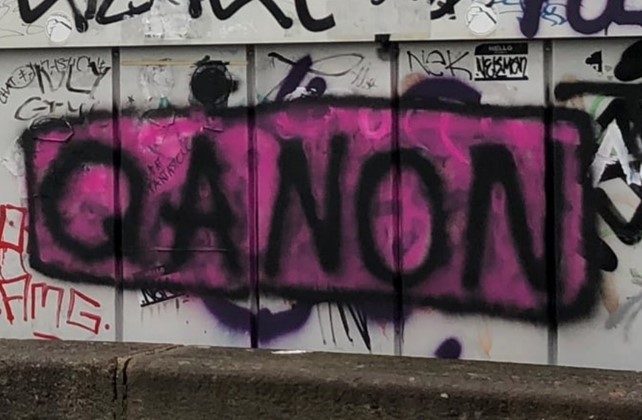
2. Far-right militant accelerationism
Initially, militant accelerationism was not primarily associated with far-right extremism. However, it gradually found its way into this milieu through two significant avenues. Firstly, in the 1990s, British philosopher Nick Land developed a right-leaning libertarian version of accelerationism after studying the works of Gilles Deleuze and Félix Guattari on left-wing accelerationism and incorporating his own interpretation of Marx’s analysis of capitalism. Two decades later, during the early 2010s, Land’s ideas gained traction among the emerging “alt-right” movement, which became deeply interested in his anti-egalitarian and antidemocratic concept of “neo-reaction.” The second and most influ-ential pathway through which accelerationism infiltrated the far-right was the publication of the book Siege, which compiled newsletter posts written by American neo-Nazi James Mason. Mason, a follower of Charles Mason, has been involved in various neo-Nazi organizations in the United States since the late 1960s. He had personal connections with prominent far-right leaders, including George Lincoln Rockwell, the leader of the American Nazi Party, and William Pierce, the author of the novel The Turner Diaries, which inspired the 1995 terrorist attack in Oklahoma City. Mason was also influenced by Joseph Tommasi, the leader of the National Socialist Liberation Front, a group inspired by leftist organizations and urban guerrilla warfare. Tommasi advocated for the creation of chaos through terrorism as a means to destabilize the political order in the United States.
Mason created the newsletter Siege, published from 1980 to 1986, as a platform to express his disapproval of the stance taken by American far-right extremism. Within the pages of his publication, he incorporated elements of antisemitic and racist conspiracy theories, specifically focusing on a “Jewish world conspiracy” that aimed to execute a “white genocide.” This concept, now labeled as the “Great Replacement,” contributed to the development of the “deep state” myth, spawning the bipartisan trope of a “Zionist Occupied Government” in America. In his book, Mason also argued that the prevailing social order had become so deeply corrupted that established organizations like the American Nazi Party, with their conventional methods of political engagement, had become ineffective in their pursuit of liberating the “white race.” According to Mason, progress could only be achieved through revolutionary, violent, means carried out by individuals and the estab-lishment of a National Socialist “New Order” would require the destruction of society. Far-right militant ac-celerationism, as a subtype of apocalyptic terrorism, draws heavily on antisemitic tropes, including concepts like “white genocide” and the “Great Replacement Theory. Moreover, it leverages perceived traditional knowledge and cultural codes to rationalize their anti-modern beliefs and to target individuals they hold responsible for societal decay. Consequently, accelerationism can be viewed as a quasi-religion, as evidenced by its resemblances and intermingling with groups like the Branch Davidians, whose eschatology mirrors similar dynamics.
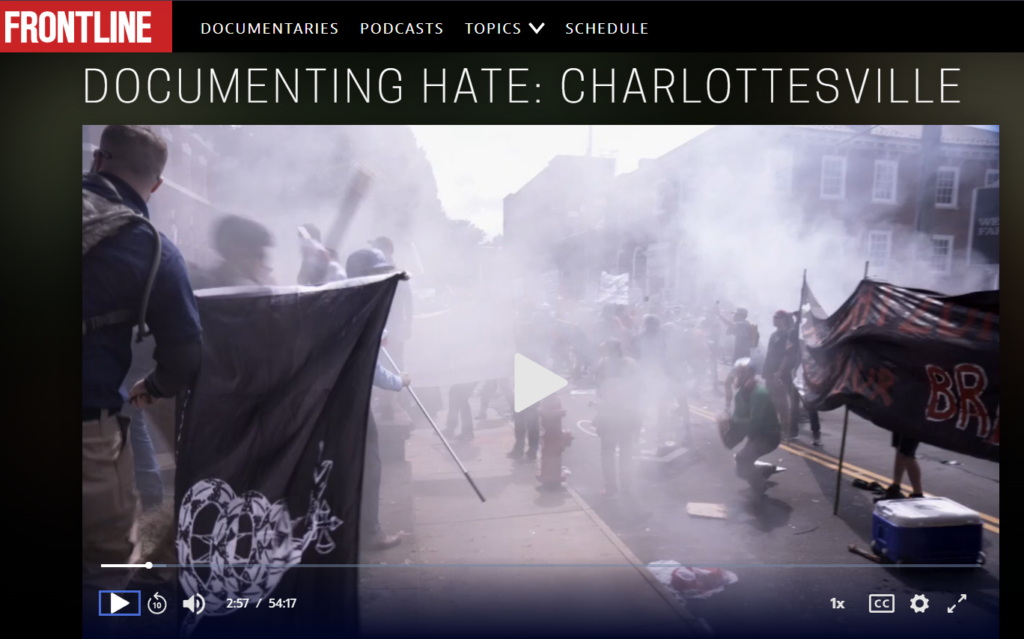
2.1. The use of Internet by far-right militant accelerationism
In the United States, adherents of far-right ideologies recognized the potential of the internet as early as the 1980s. They understood that online platforms offered an unparalleled opportunity to disseminate their message to a broader audience without the constraints imposed by traditional media. Notably, David Duke, a prominent figure in the US far-right extremist movement and former leader of the Ku Klux Klan, lauded the internet as an ideal platform for a “white revolution.” The advent of online communication played a significant role in the rise of Siege, particularly during the mid-2010s when the “alt-right” gained prominence. This movement embraced militant action strategies, which were further amplified in the aftermath of the “Unite the Right” rally in Charlottesville, USA, in August 2017. The events surrounding the rally, including the tragic killing of counter-protestor Heather Heyer, sparked intense debates within the American far-right extremist community. Mason’s critique of demonstrations and his advocacy for militant accelerationism resonated widely within these discussions. Consequently, following the Charlottesville events, the hashtag #ReadSiege gained traction both domestically and within the transnational far-right online discourse.
As today, the risk associated with militant accelerationism is primarily monitored in North America, with only a limited number of European analysts actively keeping tabs on its activities. The globalization of far-right militant accelerationism during the 2010s has given rise to various trajectories, all closely intertwined with digital spaces, which should raise concerns. One prominent platform for far-right militant accelerationism was the English-language Iron March, which operated from 2011 to 2017 and served as a breeding ground for accelerationist groups. This forum attracted a diverse range of militant far-right extremists who felt marginalized by other far-right internet forums like Stormfront, established in 1996, or were dissatisfied with the offerings of existing far-right organizations targeted at the youth. Within the Iron March forum, members cultivated their own subculture of far-right militant accelerationism, characterized by key texts and a distinct aesthetic featuring logos inspired by Waffen SS symbols and black and white skull masks. The administrators of Iron March actively encouraged transnational online communication and facilitated regional and local networking among members beyond the confines of the digital realm. Notably, a far-right extremist terrorist network emerged among the users of Iron March, which remains active to this day. Iron March’s influence extended beyond the development of its far-right extremist subculture, as it placed significant emphasis on taking action. Consequently, several accelerationist groups, including National Action (UK), Feuerkrieg Division (USA), and Antipodean Resistance (2016), were established as offshoots of this forum. It is also important to recognize that Iron March merely marked the beginning of this phenomenon.
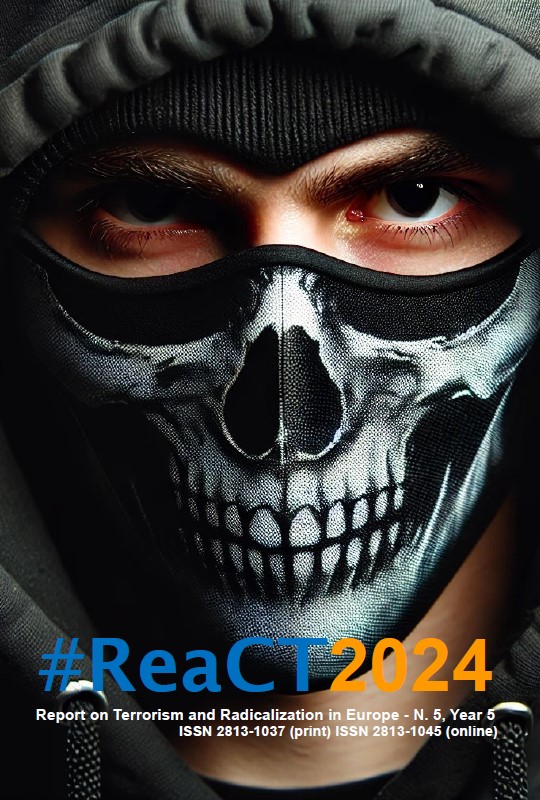
3. The manosphere
Despite a general decline in public activities among far-right militant accelerationists during the COVID-19 pandemic, their digital efforts have significantly increased since the spring of 2022. Consequently, the number of prevented attacks has also risen. The primary trends that originated within these tightly knit online communities during the 1980s, 1990s, and 2000s remain relevant within the global social network they have evolved into. Notably, new online spaces continuously emerge, often bearing little resemblance to formal, traditional far-right extremist organizations. These decentralized networks, organized in cells, foster sub-cultures defined by their cultural codes, such as memes, and constantly adapt to enhance their relevance in the public sphere. They have now permeated other online realms, including gaming platforms, and rely on the broader internet troll culture. They propagate through the manosphere, a collection of communities centered around radical anti-feminism and the conspiracy theory milieu, where individuals seek “the truth” or embrace the “Red Pill” ideology. These networks thrive in “politically incorrect” boards, forming a transnational subculture that revolves around both ironic and serious far-right extremist, misogynistic, antisemitic, and misanthropic content. Of particular interest is the manosphere, which has attracted the attention of accelerationists due to its rapid growth and potential for real-world violent outbursts.
Despite being referred to as a collective noun, the manosphere encompasses four distinct subcultures: men’s rights activists who view feminist policies as detrimental to men’s rights, incels (involuntary celibates) who hold women responsible for their lack of opportunities and social status, separatists who believe in a feminist conspiracy to dismantle masculinity and advocate for complete segregation between genders, and the seductive type who objectify women and promote the acceptance of rape culture. These emerging subcultures also align themselves with existing digital hate cultures that have already established their presence on various platforms, thereby bolstering their recruitment efforts.
4. When left and right join forces
It is important to acknowledge that accelerationist groups primarily act as opportunists and will seize any opportunity to infiltrate a popular movement. This has been evident in various instances throughout history. For instance, in 2020, the far-right anti-government Boogaloo movement attempted to associate themselves with the Black Lives Matter movement by claiming shared goals. Similarly, in the 2000s, the far-left Black Blocs successfully exploited popular protests against the G8 leaders. During the pandemic, both far-left and far-right groups united against lockdown measures. In these contexts, stochastic violence has also surfaced, manifesting as sporadic acts of aggression, intimidation, or property destruction. While such gatherings ostensibly advocated against vaccination mandates and perceived infringements on personal freedoms, they often attracted individuals with extremist inclinations from both the far-left and far-right ends of the political spectrum. Amidst the commotion of these events, lone actors or small factions have engaged in acts of random (stochastic) violence, ranging from verbal harassment to physical violence, aimed at sowing chaos and instilling fear. Far-right extremists have exploited these rallies to propagate anti-government sentiment and amplify distrust in public health institutions, while far-left had view them as opportunities to challenge corporate interests and in particular Big-Pharma. The unpredictable nature of stochastic violence in this context not only poses immediate safety concerns but also underscores the broader societal polarization and radicalization fueling such events.
In the current political environment, these groups are now aligning themselves with the pro-Palestine movement. The pro-Palestine movement has gained significant support in recent weeks, with numerous protesters taking to the streets worldwide to demand a ceasefire in Gaza. Unfortunately, this surge in support has also created an environment where various groups, including far-left, far-right accelerationists, and antise-mitic organizations, attempt to associate themselves with the mainstream pro-Palestine movement. This has resulted in a confusing web of claims and widespread dissemination of misinformation. One way these groups exploit the pro-Palestine movement is by adopt-ing its language to criticize the actions of the Israeli government in Gaza. However, they then utilize this platform to promote anti-Jewish conspiracy theories and stereotypes. The right-wing factions often reference the “Great Replacement” conspiracy theory, baselessly claiming that Jewish individuals purposefully facilitate migration into Western countries to replace white people. On the other hand, the left-wing factions attack liberal democracies and market-based economies by invoking references to Zionism and colonialism. Across the United States and Europe, far-right and far-left extremists have capitalized on the growing anger towards the Israeli government as an opportunity to spread anti-semitic, anti-democratic, and anti-capitalist conspiracy theories. Their intention is to legitimize these ideas within mainstream discourse and attract new recruits.
5. Main takeaways
Both the far-left and the far-right militant accelerationist groups possess a digital evolutionary advantage due to the transformations in the online media landscape, which have created new avenues for radicalization. These accelerationists have also strategically utilized algorithms to target susceptible individuals for recruitment. Unlike their BBS predecessors in the 1980s and 1990s, which mirrored real-life communities, today’s platforms are characterized by the “attention economy” and “dopamine addiction.” Posts that fail to attract sufficient attention are gradually phased out from the front page to make room for particularly captivating posts, effectively turning extremism into a chemical dependency. Moreover, far-left and far-right violence is increasingly intertwined, creating a classic “security dilemma.” These characteristics further amplify the perilous nature of this phenomenon and should require active monitoring and intervention.
Stochastic violence is a disturbing tactic employed by political extremists, characterized by its unpredictable and random nature. Unlike organized violence with clear targets and objectives, stochastic violence aims to create a pervasive atmosphere of fear and uncertainty by striking seemingly at random. This strategy often involves lone actors or small groups carrying out acts of violence without direct coordination with a larger organization, making it difficult for authorities to anticipate or prevent. The perpetrators may be motivated by extreme ideologies or grievances, using violence as a means to spread terror and advance their agenda. Stochastic violence poses a significant challenge to counterterrorism efforts, as it can be difficult to detect and preemptively address the underlying radicalization that fuels such attacks. Moreover, its unpredictable nature amplifies the psychological impact on communities, fostering fear and distrust while undermining social cohesion. Addressing stochastic violence requires a multifaceted approach that addresses not only the im-mediate security concerns but also the underlying societal factors that contribute to extremism and radicalization.
Militant accelerationism has emerged as a tool for hostile foreign countries like Russia and China to sow chaos and destabilize Western nations from within. These nations may clandestinely support or manipulate extremist groups subscribing to accelerationist doctrines to exacerbate existing social tensions and exploit vulnerabilities in democratic systems. For instance, Russia has been accused of utilizing online platforms to amplify divisive narratives and support far-right accelerationist movements in Europe and the United States, aiming to undermine trust in democratic institutions and foster internal discord. Similarly, China has been implicated in funding and promoting extremist factions to exploit societal fault lines in Western societies, thereby weakening their cohesion and global influence. Such exploitation of militant accelerationism underscores the evolving nature of asymmetric warfare, where non-state actors and fringe ideologies become instruments in the geopolitical strategies of hostile nations. Overall, Russia and China may support militant accelerationist groups in the West as part of a multifaceted strategy to weaken their adversaries, challenge Western values and institutions, and advance their own geopolitical interests on the global stage.
In conclusion, the risk of accelerated terrorism is clear and significant as we head into 2024, and it could even escalate further in the run-up to the US presidential election or the next European elections. Disgruntled individuals and armed extremist groups are likely to continue resorting to violence in order to spark a revolution and prevent what they perceive as the “deep state” from manipulating elections and enslave them. The current clash of conflicting narratives, present in nearly every aspect of political discourse, worsened by partisan divides and amplified on social media, will continue to hinder governments’ efforts to address the threat of domestic terrorism. The current atmosphere is alarmingly reminiscent of the period preceding events like the “years of lead” or the Oklahoma City bombing. Back then, extremist rhetoric urged supposed patriots or revolutionaries, like Timothy McVeigh or Mario Moretti, to protect their fellow citizens from what they saw as a corrupt government backed by a wealthy elite. Today, there are potentially many more individuals like them, and we cannot afford to wait for another series of tragic events before decisive action is taken against this threat.
Andrea Molle, Ph.D., FRAS, Senior Research Fellow, Orange (California, Stati Uniti). Quantitative and computational social scientist. Since 2012, he has been an Assistant Professor of Political Science and an Associate Researcher at the Institute for the Study of Religion, Economics, and Society at Chapman University. From 2006 to 2008, he was a JSPS Fellow in Anthropology at the Nanzan Institute for Religion and Culture (Nagoya, Japan).















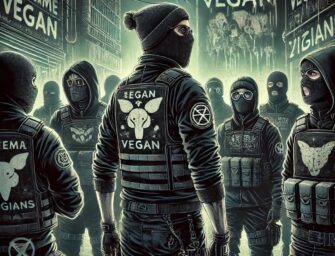





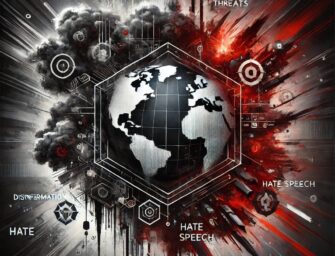













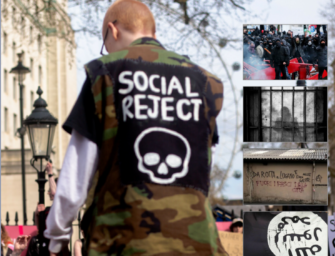

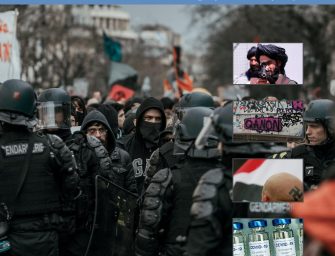


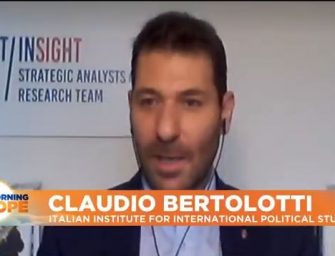




There are no comments
Add yours